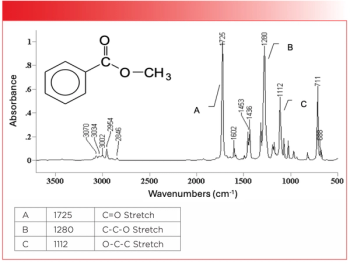
AI-Powered Spectroscopy Faces Hurdles in Rapid Food Analysis
A recent study reveals on the challenges and limitations of AI-driven spectroscopy methods for rapid food analysis. Despite the promise of these technologies, issues like small sample sizes, misuse of advanced modeling techniques, and validation problems hinder their effectiveness. The authors suggest guidelines for improving accuracy and reliability in both research and industrial settings.
The food industry has seen a surge in the use of rapid, non-destructive analytical methods powered by artificial intelligence (AI) and spectroscopy. These methods, which include vibrational spectroscopy and other sensor-based technologies, offer the potential for quick, accurate assessments of food quality and authenticity. However, a new study by Wenyang Jia, Konstantia Georgouli, Jesus Martinez-Del Rincon, and Anastasios Koidis highlights significant challenges in the implementation of these technologies. The research, conducted across institutions like the Institute for Global Food Security at Queen’s University Belfast and the Lawrence Livermore National Laboratory in the USA, was published in the journal Foods and provides a critical overview of the current state of AI-driven food analysis (1).
Read More:
The Rise of AI in Food Analysis
Traditionally, food analysis has relied on targeted methods like chromatography and mass spectrometry (MS), which are both time-consuming and resource intensive. In contrast, the new generation of rapid methods, such as vibrational spectroscopy (including mid-infrared [IR], near-infrared [NIR], and Raman spectroscopy), offers a more efficient alternative. These techniques, coupled with AI-based analytics, can quickly produce and interpret complex spectroscopic signals demonstrating the molecular structure of foodstuffs. However, these "untargeted" methods generate vast amounts of data, making it challenging to extract and interpret meaningful and validated information (1,2).
Challenges in AI-Driven Spectroscopy
One of the main issues identified in the study is the small sample sizes used in many research studies, which limits the effectiveness of advanced AI techniques like deep neural networks (NNs) and transformers. These state-of-the-art methods require large datasets to function accurately, yet many studies lack sufficient data to train these models properly. Additionally, the study criticizes the overuse of advanced chemometric techniques in situations where they do not significantly enhance the analysis. The authors argue that these methods are often applied in an attempt to add depth to the results, but they can instead lead to vague or unsupported conclusions (1).
Another problem is the reliance on manual, visual inspection techniques for variable selection, rather than using algorithmic or knowledge-driven approaches. This can result in models that are not robust enough to handle the complexities of real-world food analysis. Moreover, the transition from laboratory conditions to industrial environments introduces additional noise and variability, further complicating the application of these models (1).
Implications for Industry and Research
The study emphasizes the importance of capturing high-quality raw data from authentic samples in sufficient volumes. This, combined with robust validation processes, is crucial for developing accurate and reliable AI-driven methods for food analysis. The authors also highlight the need for better experimental design tailored to the specific analytical challenges in both research and industrial settings (1).
Despite the promise of AI in revolutionizing food analysis, the study concludes that current methods are not yet fully equipped to replace traditional targeted approaches. There is a clear need for continued research and development to overcome the identified challenges and to ensure that AI-driven spectroscopy can be effectively integrated into routine food analysis (1).
Conclusion
While AI-powered spectroscopy holds great potential for rapid food analysis, this study reveals significant hurdles that must be addressed to fully realize its benefits. Issues such as small sample sizes, misuse of advanced modeling techniques, and challenges in transitioning from lab to industrial environments all need to be tackled. The authors provide practical guidelines for improving the accuracy and reliability of these methods, ultimately contributing to a more secure and efficient food supply chain (1).
This research serves as a critical reminder that while AI offers powerful tools for food analysis, careful attention must be paid to the methodology and validation processes to ensure these technologies can deliver on their promises (1).
References
(1) Jia, W.; Georgouli, K.; Martinez-Del Rincon, J.; Koidis, A. Challenges in the Use of AI-Driven Non-Destructive Spectroscopic Tools for Rapid Food Analysis. Foods 2024, 13 (6), 846. DOI:
(2) Meza Ramirez, C. A.; Greenop, M.; Ashton, L.; Rehman, I. U. Applications of machine learning in spectroscopy. Appl. Spectrosc. Rev. 2021, 56 (8-10), 733–763. DOI:
Newsletter
Get essential updates on the latest spectroscopy technologies, regulatory standards, and best practices—subscribe today to Spectroscopy.




